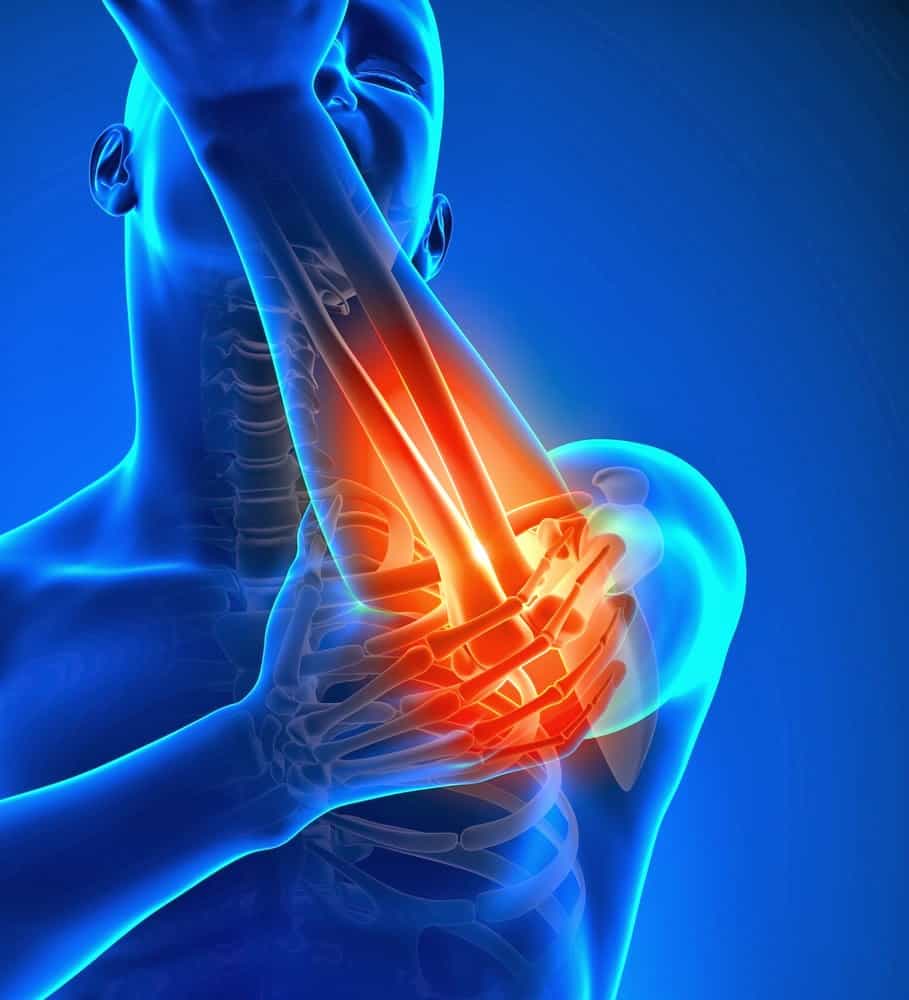Common Dysfunctions of the Elbow
The elbow is essentially a hinge joint. Most elbow injuries are due to dysfunctions at the wrist and/or shoulder. The elbow is intricately involved at the shoulder joint with the triceps and biceps musculature of the upper arm. The elbow will rotate when the shoulder rotates. Placing the shoulder in extremes of internal rotation or pro-traction will little more than harm to the shoulder with decreasing returns upon bicep and tricep development and function.
Performing tricep exercises in extremes of shoulder flexion may also be worth further scrutiny in regard to shoulder stress relative to the goal of tricep development. Development of the tricep and bicep musculature is best for the elbow when minimal motion at the shoulder is achieved, or the shoulder is in a relatively neutral position when isolating tricep or bicep involvement.
Since most activity involving elbow injury involves the tendons, otherwise known as “tennis elbow”, it becomes exceedingly important to ensure shoulder stability as most injuries occur with significantly rapid and power shoulder ex-tension and elbow extension movements such as throwing in sporting activities such as foot-ball and baseball, serving motions in tennis, and hitting in volleyball. The pull upon tendons at the elbow that cause injury are often due to an inability to sufficiently slow the powerful movement into extension. For this reason, an effective balance must be achieved between shoulder stability, and the extensors and flexors of the elbow. Repetitive motions in one main direction of movement are often the long term culprit for elbow pain and tendonitis. Excessive hours spent in a forward position with pressure onto the elbows while biking can also create elbow tendonitis. Decreasing activity and increasing the muscular activation potential of muscles that become inhibited in such motions becomes crucial. Simply analyze the repetitive movement that causes pain and better answers may be understood for how to decrease stress and minimize injury.
Common Dysfunctions of the Wrist
Most dysfunction at the wrist is due to excessive extension at the wrist if the hands must reach up to the keyboard while typing. Many desks are placed too high above a position of sitting to enable the shoulder to remain in a relatively neutral position and not place significant stress upon the hands and wrists. If the repetitive motions of typing or writing cannot be avoided, care must be taken every 30 minutes to move the fingers and wrists in the opposite motion of repetitive action. In most cases, this means positions of flexion for the wrists and extension for the fingers. Simply taking two minutes to move flu-idly in these ranges may prove immensely helpful and decrease opportunities for carpal tunnel syndrome and other dysfunctions at the wrist.
Injuries caused by blunt trauma cannot be avoided, but effective time spent strengthening the wrist musculature in stable, neutral positions while gripping and lifting can decrease the probability that blunt trauma will cause significant in-jury. As always, careful scrutiny must be made to identify repetitive motions repeated through-out the day so that time spent in the gym with the functional training specialist can be utilized to activate weak and nearly dormant musculature. Educating your clientele may be helpful, unless you want to spend a majority of your time going over the same exercises, in the same motions and directions, with the same intensity due to a never improving client who reinforces faulty movement patterns the other 23 hours of their daily lives. When you’re not around, teach them to accountable to themselves.






